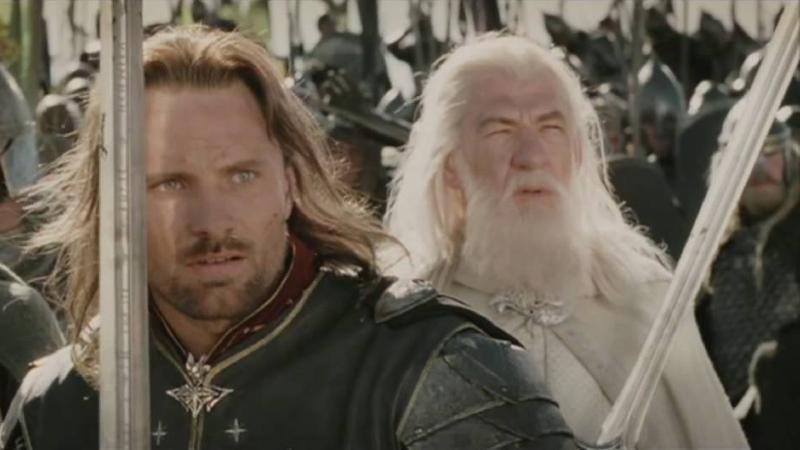Director – Peter Jackson – 2003 – New Zealand – Cert. 12a – 201m (263m)
*****
(NB Extended Edition, in cinemas from Monday, August 10th 2020, 263m in cinemas due to extended frame rate = 252m version released on DVD 2004.)
This review of the 201m theatrical version was originally published in Third Way.
A much shorter review appeared in What’s On In London.
A pre-screening article on The Lord Of The Rings appeared in Sussed in 2001.
Tolkien’s The Lord Of The Rings is a labour of love by a brilliant academic obsessed by myth and language better at creating an alternate world than at story construction. Nowhere in the trilogy is this more evident than in The Return Of The King. Frodo’s trip to Mount Doom to unmake Sauron’s One Ring builds up incredibly to a climactic pivotal event running little more than a paragraph. This is followed by another hundred pages or so tying up loose ends, including a sequence in which evil wizard Saruman turns the Shire into a post-industrial dictatorship that’s trivial compared with the geographic enormity of what has gone before.

Jackson and co-writers wisely omit that sequence; indeed, in its last weeks of post-production his The Lord Of The Rings: The Return Of The King has chopped its scenes of Saruman (Christopher Lee) at Isengard – on the grounds that it slowed down the start. (It’s promised on next year’s extended edition DVD, which versions of the first two films have both improved on the shorter theatrical ones.).

Nevertheless, all requisite Tolkien material is here, brilliantly condensed. The Mount Doom scene itself is expanded and so given the necessary dramatic weight. Liberties taken with The Paths Of The Dead likewise serve the narrative well. Jackson’s opening (which recalls his earlier Heavenly Creatures) is as unexpected and stunning as that of The Lord of the Rings: The Two Towers, while his finale effectively pictures Tolkien’s closing metaphor for life after death as Bilbo, Gandalf and Frodo depart a harbour in boats. His very last image is perfect: the closing of a garden gate and the shutting of a hobbit’s front door.
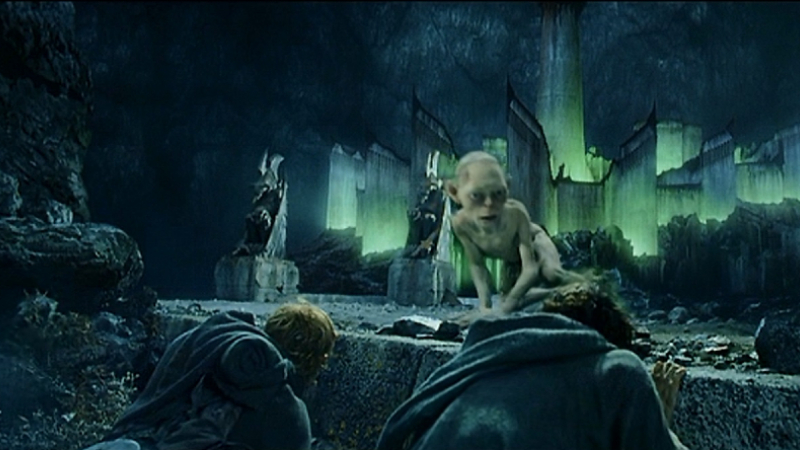
Terrific performances again jostle with incredible special visual effects. Among performers familiar from past instalments, Elijah Wood as Ringbearer Frodo plumbs even greater emotional depth than previously as his relationship with Sam (Sean Astin), the CGI-rendered Gollum (voiced by Andy Serkis) and the One Ring grows in complexity. Hugo Weaving seems more comfortable as Elrond. Of the remainder, John Noble stands out as Denethor, Steward of Gondor.
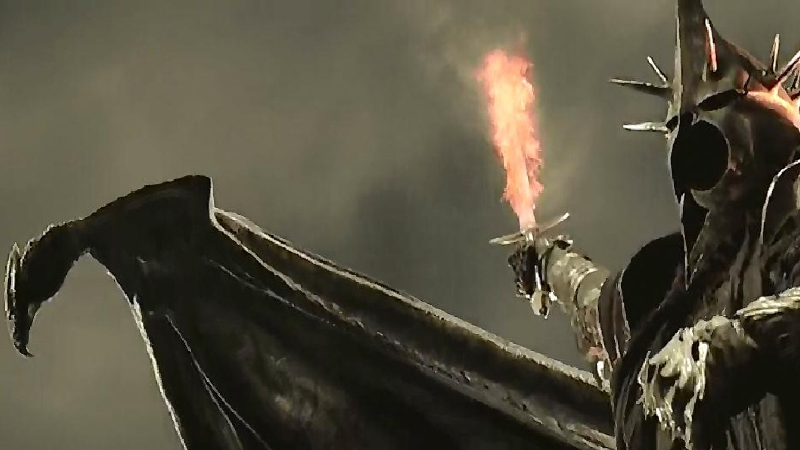
Giant spider Shelob proves a disappointment (no mythic verbal build-up, tunnels not dark enough), but Oliphaunt armies, siege machines and numerous battles more than compensate. The Witch-King (Nazgul leader) and the dragonlike Nazgul steeds (the best dragons ever seen in the movies) are particularly impressive and given plenty of screen time.
In short, riveting stuff.
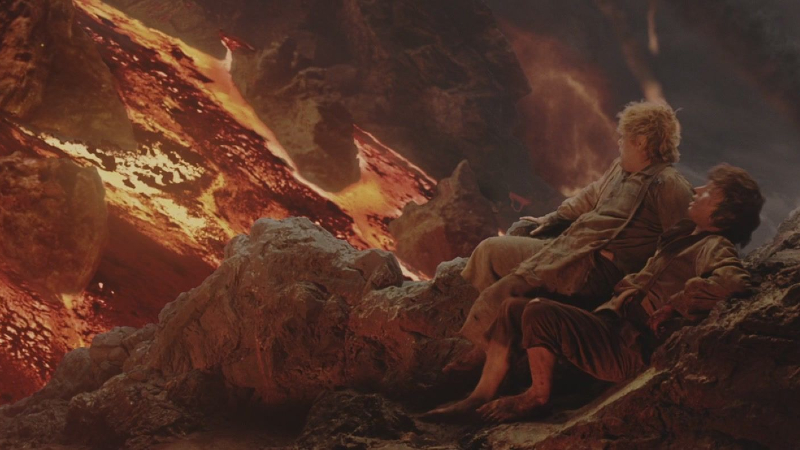
If one stops and reflects, it’s incredible that anyone has finally pulled off a decent cinema adaptation of LOTR in its entirety, that all the books’ moral depth and values have survived translation into a series of commercial movies and that the results are so astonishingly excellent, each one at least as good as the last if not better. (Anyone remember Ralph Bakshi’s much maligned, incomplete animated version?)
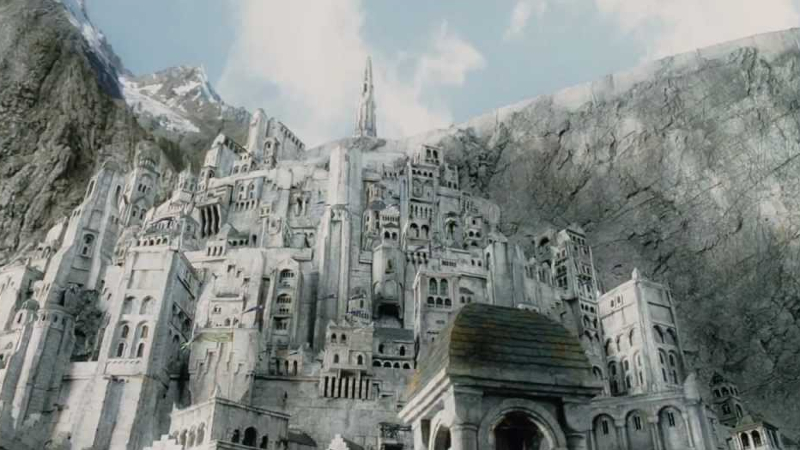
It’s true that theatrical running length demands have taken their toll on Jackson’s trilogy – the end of the Battle of Helm’s Deep makes little sense until you see it with essential excised footage restored on TTT extended DVD, while Gandalf’s escape from Isengard by eagle makes no sense in either version of The Lord of the Rings: The Fellowship of the Ring – but imagine what we’d have missed had the director succumbed to requests he make one three hour film instead of the three proposed.
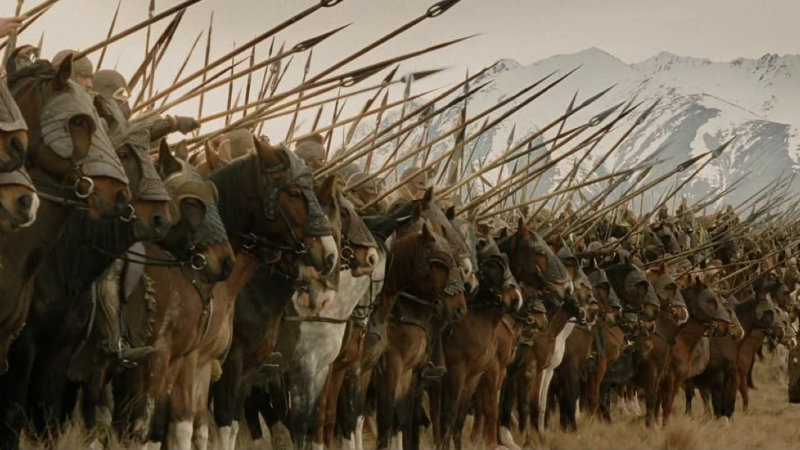
In the end, like the much-lauded BBC radio version, Jackson’s film text adds to and complements Tolkien’s written one. As a treasury of visual research into Middle Earth, his three films are nothing less than invaluable. In passing, sequences like FOTR’s Balrog, TTT’s radical use of CG for Gollum and ROTK’s scene of Legolas climbing, unmanning and vanquishing an Oliphaunt have pushed forward the special visual effects technician’s art. Never a goal for its own sake, this has rather served narrative demands every time.

Perhaps Jackson’s greatest achievement throughout is the splitting of Gollum into two characters, Gollum and Smeagol, begun in TTT and continued in ROTK most evidently in the scene where Smeagol converses with his reflection in water.

Does Jackson subscribe to the Christian faith? No idea. But Tolkien definitely did and, moreover, in his construction of a myth that would appeal to contemporary humankind deliberately went out of his way to exclude any religious system from Middle Earth. By creating a movie equivalent of Tolkien’s book, Jackson has remained faithful to that intention. And that, at the end of all things, is what will count.

UK release date 17/12/2003.
This review was originally published in Third Way.
A much shorter review appeared in What’s On In London.
A pre-screening article on The Lord Of The Rings appeared in Sussed in 2001.
Trailer here:
Trailer for the entire trilogy here:
